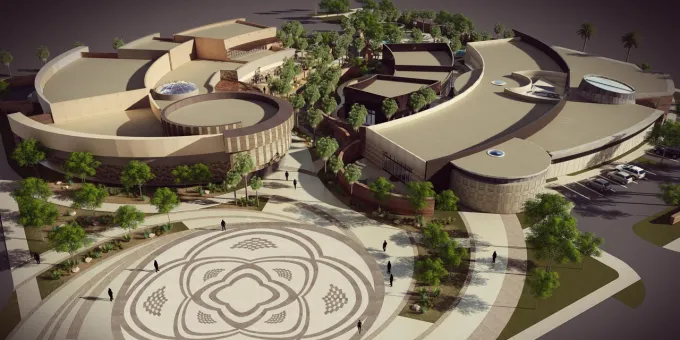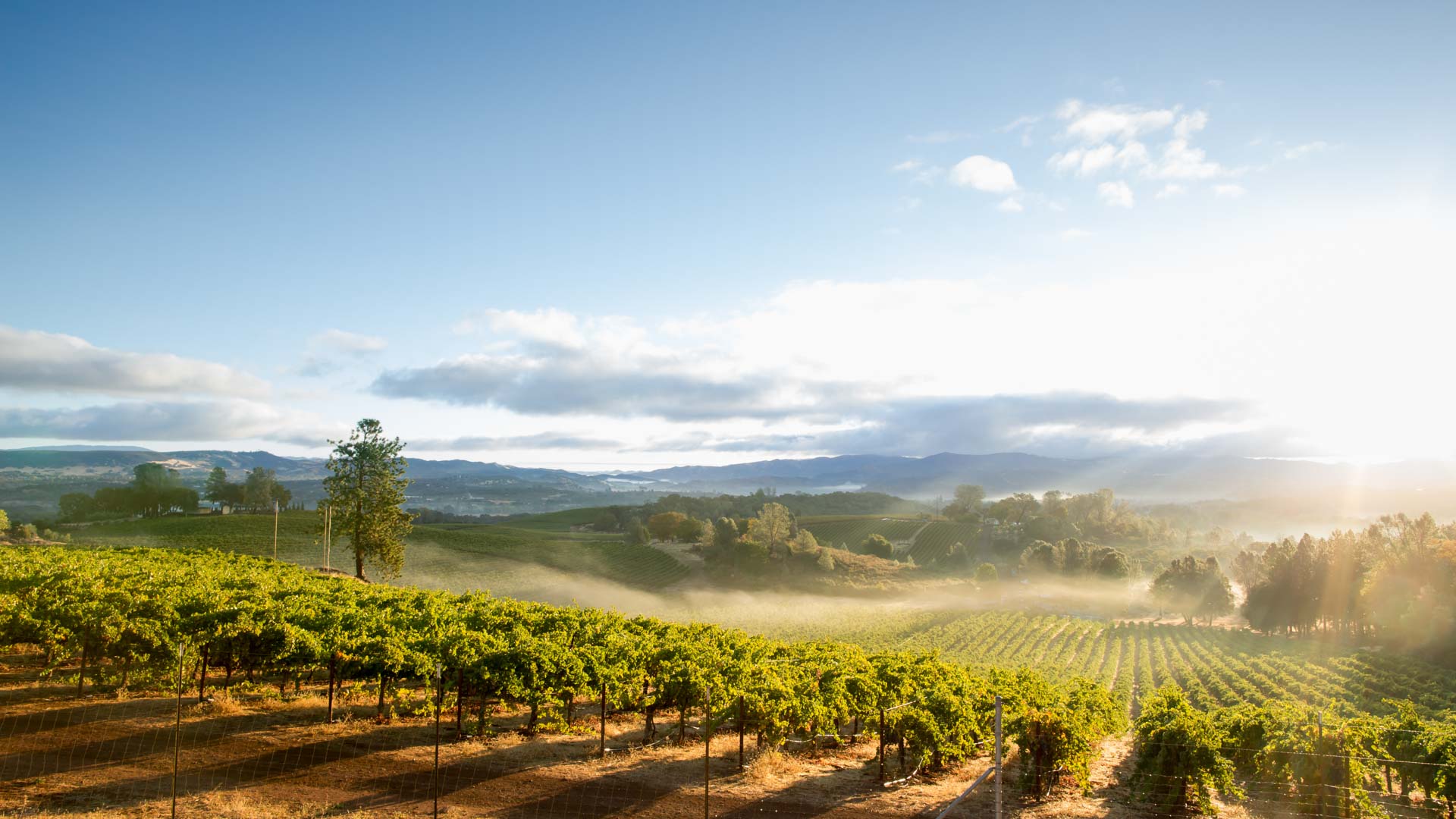The Agua Caliente Band of Cahuilla Indians has redefined the visitor experience for travelers from around the world to this famed Southern California destination. The Tribe recently opened its new world-class day spa, The Spa at Séc-he, in downtown Palm Springs at the Agua Caliente Cultural Plaza (the museum and the rest of the plaza are slated to open in late 2023). The new spa features 22 private baths that allow spa goers to experience the Tribe’s ancient hot mineral spring water.
Even as the Agua Caliente expands the economic base for its more than 500 Tribal members and plays a growing and dynamic role in contemporary Palm Springs, the federally recognized Tribe is committed to strengthening cultural connections to the ancient world of its ancestors.
Agua Caliente Tribal members had envisioned the cultural plaza, with its museum and spa, for more than 30 years, says Tribal Chairman Reid D. Milanovich, whose late father Richard served as chairman for nearly 28 years. Milanovich believes the plaza will prove to be one of the most important projects ever built by the Agua Caliente.
As Milanovich said in a 2022 interview with Palm Springs TV station KESQ, “We will have the ability to educate the public about who we are as a people. Our traditions. It will bridge the gap between the old traditional life up to modern times…The most important part about that is it is told by us. It is not another organization, another museum talking about the Agua Caliente Tribe. It is through our own voices. The power of that is incredibly significant.”
While the Agua Caliente is an important part of modern Palm Springs, Tribal members are never far away from their timeless connections to this desert land. The Tribe still owns and manages the Indian Canyons, home to the stands of native California fan palms that gave Palm Springs its name, and Tahquitz Canyon, a natural area at the base of the San Jacinto Mountains with a 60-foot waterfall and that serves as the setting for an important Tribal legend.
The past and present are by no means separate for the Agua Caliente and the Tribe’s thousands of years of history in Palm Springs continue to shape the Tribe’s future.
“It’s not just about our generation,” said Milanovich in the television interview. “I think it’s incredibly important that we remember that the decisions we make today, they’re not just for us today, but for future generations moving forward. It’s what the previous generations did for us. You look at the struggles that they went through to get us where we are today. Now it is our job in this generation to continue that path of moving forward.”
Experiencing the Agua Caliente World
Spreading over 5.8 acres in downtown Palm Springs, the new Agua Caliente Cultural Plaza is one of the country’s largest Native American museums and cultural centers. It was developed both to inform visitors about the Tribe’s history in the area and to celebrate and preserve traditions for today’s Agua Caliente people. The cultural plaza’s striking contemporary design and bespoke terrazzo floors in the museum and spa buildings draw inspiration from the Agua Caliente’s basketmaking tradition. In fact, the tile patterns come directly from designs on baskets in the Tribe’s own history.
The museum takes visitors on a thematic, non-chronological journey through the world of the Agua Caliente, with a main 10,000-square-foot exhibition space that introduces visitors to aspects of Tribal culture. Visitors can experience creation and migration stories during a short 360-degree digital animation presentation that’s projected onto the wraparound walls of a state-of-the-art theater.
The plaza’s Oasis Trail, a path with flowing water, boulders, and towering California fan palms that recreate the setting of the nearby Indian Canyons, leads from the museum to The Spa at Séc-he (Sound of Boiling Water). With 22 private baths, as well as pools, here you can quite literally immerse yourself in the ancient world of the Agua Caliente as you soak in mineral waters fed from 8,000 feet underground by the very hot springs that gave the Tribe its name. Milanovich described the ancient water as “the heart, it is the soul of this Tribe.”
If you’re looking for a place to stay and play in the Coachella Valley, the Agua Caliente Tribe owns and operates a casino resort in Rancho Mirage, as well as two casinos in Palm Springs and Cathedral City. Each of these properties has its own character and attractions, including Rancho Mirage’s The Show, a 2,032-seat concert theater that has drawn leading performers from Willie Nelson to Sting. Golfers will want to tee up at the Tribe’s Indian Canyons Golf Resort, a classic destination that has drawn presidents and celebrities since opening in 1961. The golf resort’s two courses rank with the best in the golf-mad Coachella Valley.
For the more natural side of the Agua Caliente Indian Reservation, Tahquitz Canyon lets you discover an area of great cultural significance and striking beauty—from its 60-foot waterfall to its historic landmarks and spring wildflowers. A 1.8-mile loop trail explores the canyon, which is open both for self-guided tours and outings with Tribal rangers who bring alive the area’s spiritual significance and deep history. Filled with stands of towering native California fan palms, the Indian Canyons—Andreas, Murray, and Palm—are prime destinations for wildlife viewing. Fifteen-mile-long Palm Canyon is the world’s largest California fan palm oasis and open for hiking and horseback riding along its full length. But there are also shorter hiking options on the canyons’ 60-mile trail network, including an easy 1-mile loop through Andreas Canyon.
An Ancient Culture, a Modern Presence
During construction of the Agua Caliente Cultural Plaza, tribal archaeological monitors worked to ensure that any unearthed artifacts would be preserved. They discovered a rich trove of items—spear and projectile points, grinding stones and tools, and clam and abalone shell beads. Carbon dating of these items suggests that the site’s human presence dates back more than 8,000 years.
The Agua Caliente Band is one of nine federally recognized Cahuilla Tribes in Southern California. The area’s surprisingly abundant water, which the early Agua Caliente efficiently used by building irrigation ditches, dams, and small reservoirs, allowed them to raise such crops as melons, beans, and corn. Historically, the Agua Caliente also gathered an assortment of foods from native plants, including acorns, mesquite beans, and wild fruits, as well as materials for baskets.
Basket weaving is an integral part of Cahuilla culture. According to the Tribe, the Agua Caliente traded baskets and used them in daily life. Beyond the practical uses, baskets shared stories of the Cahuilla people through their iconography of plants and animals, particularly birds and snakes. As a rite of passage, elders also presented young Tribal members with baskets when they came of age.
Today’s Agua Caliente are keeping alive basket weaving and other traditional arts, such as pottery, by taking classes offered by the Tribe to learn these ancient crafts. More Tribal members are also studying the Cahuilla language, which is considered critically endangered and only spoken fluently by a handful of people.
The Agua Caliente Indian Reservation encompasses more than 31,000 acres, including 6,700 within the city of Palm Springs. These lands are not contiguous and form a checkerboard pattern of square-mile parcels because in the 1850s, the federal government granted sections of land to the Southern Pacific Railroad prior to the establishment of the reservation boundary.
Recently, U.S. President Joe Biden signed into law an agreement for a land exchange that will put 2,560 acres in the Santa Rosa and San Jacinto Mountains National Monument into trust for the Agua Caliente. The agreement was the culmination of a years-long effort by the Agua Caliente and Milanovich said, “These lands have longstanding cultural and natural resource value to the Cahuilla people.”
In early 2023, the Agua Caliente also successfully worked with federal and local officials to remove a derogatory place-name from a landform in the Thousand Palms Oasis Reserve. It’s now known as Múmamet Hill, which means “Great Hill” in Cahuilla.

